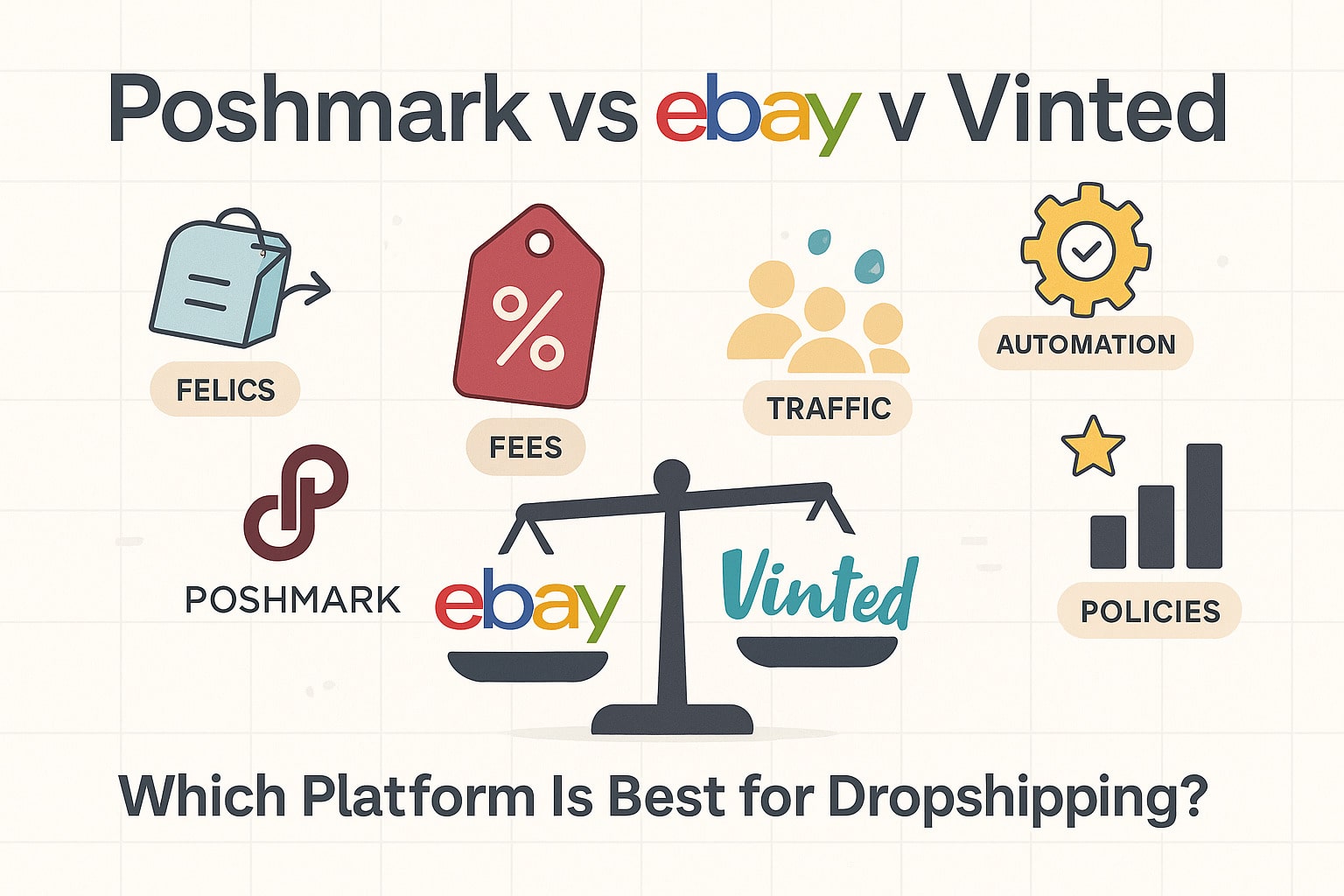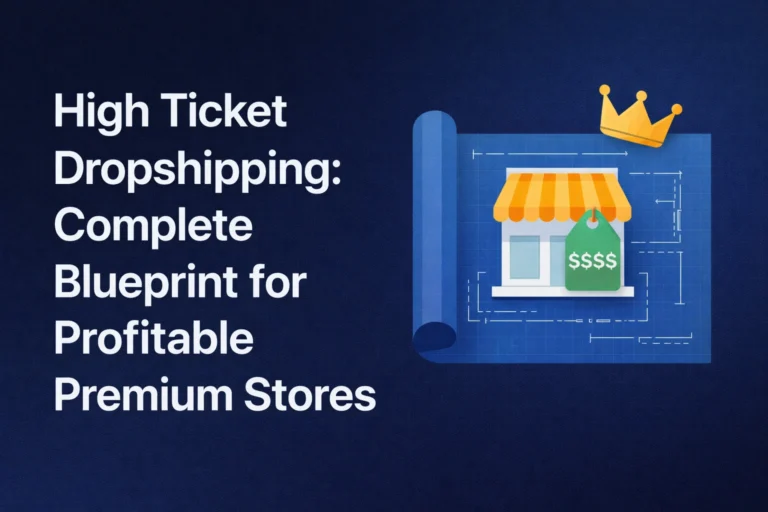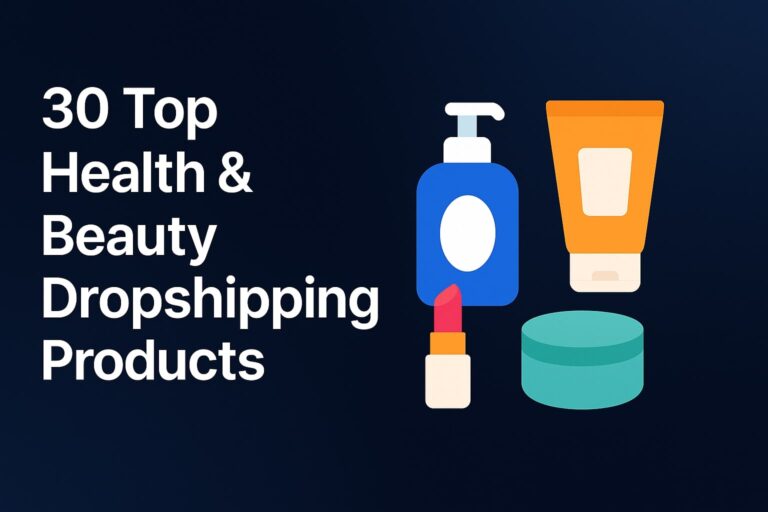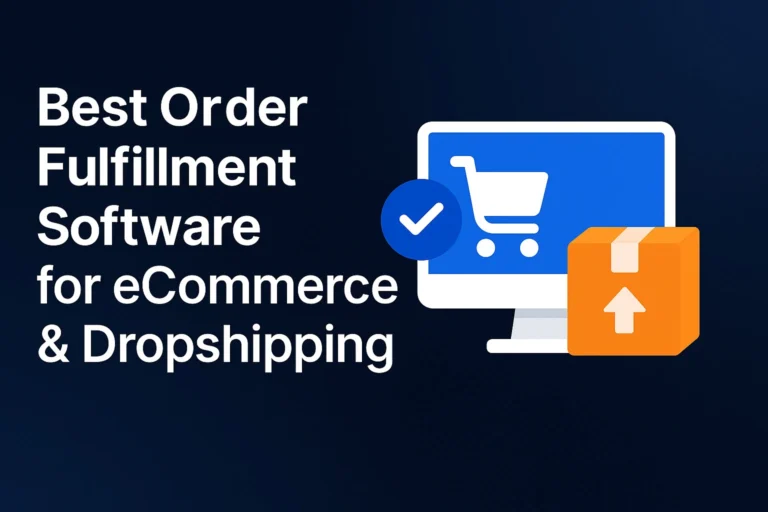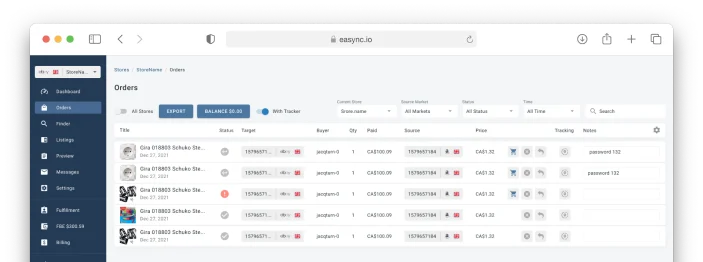Selling clothes online in 2025 is both easier than ever and more confusing than ever. On one hand, you’ve got millions of buyers actively searching through secondhand fashion platforms and used clothing marketplaces, or new apparel every single day. On the other hand…. Which platform actually wins in the:
Poshmark vs eBay or Vinted vs eBay debate?
You might have noticed how each platform claims to be “the best place to sell fashion”, but that really depends on who you are.
- Are you a casual seller cleaning out your closet?
- A full-time reseller flipping thrift store finds?
- A dropshipper or arbitrage seller trying to scale using tools like Easync.io?
- Or someone who just wants to sell fast, without all the fees, admin, and policies?
This guide strips away the hype and gives you a real comparison, instead of a generic pros-and-cons list.
We’ll compare fees, buyer behaviour, shipping rules, automation potential, return policies, and most importantly: Can you make a profit on each platform, and is dropshipping allowed?
By the end, you should know exactly where to sell your clothes and where you shouldn’t waste your time.
Quick Overview: Platform Strengths at a Glance
| Platform | Best For | Biggest Advantage | Biggest Downside |
| eBay | Resellers, dropshippers, bulk listers | Global reach and automation tools | Fees add up without a good strategy |
| Poshmark | US-based fashion sellers | Built-in social traffic and instant shipping labels | High selling fees |
| Vinted | Low-fee casual clothing sellers | Zero seller fees in most regions | Limited support for business or dropship sellers |
Now let’s break each one down properly.
eBay: The Global Marketplace Giant
If selling online were a sport, selling clothes on eBay would be the champion. eBay has an impressive 130+ million active users worldwide. It’s the only platform on this list that allows you to sell clothing, electronics, collectibles, auto parts, fitness gear, toys, and basically everything in between.
Why sellers choose eBay:
- Massive traffic and long-term buyer trust.
- eBay has auction and buy-it-now formats.
- Sellers have full control over pricing and returns.
- Supports automation tools for dropshipping, repricing, and inventory sync.
Ebay doesn’t lock you into one selling style like Poshmark or Vinted do, and that freedom is exactly what lets you scale. On eBay, retail arbitrage or Amazon eBay flipping is possible, and you can list jackets and brand-new wholesale stock in the same store, and nobody blinks an eye.
But eBay isn’t perfect.
- eBay clothing fees 2025 can stack up in the form of final value and optional promoted listing fees.
- Returns are more common due to seller protection policies favouring buyers.
- If your titles and item specifics aren’t optimized (link to the previous blog I wrote), you get buried.
In short, when it comes to selling on eBay vs Poshmark, eBay is unbeatable for scalability as it allows for dropshipping, but only if you treat it as a system and not a dumping ground.
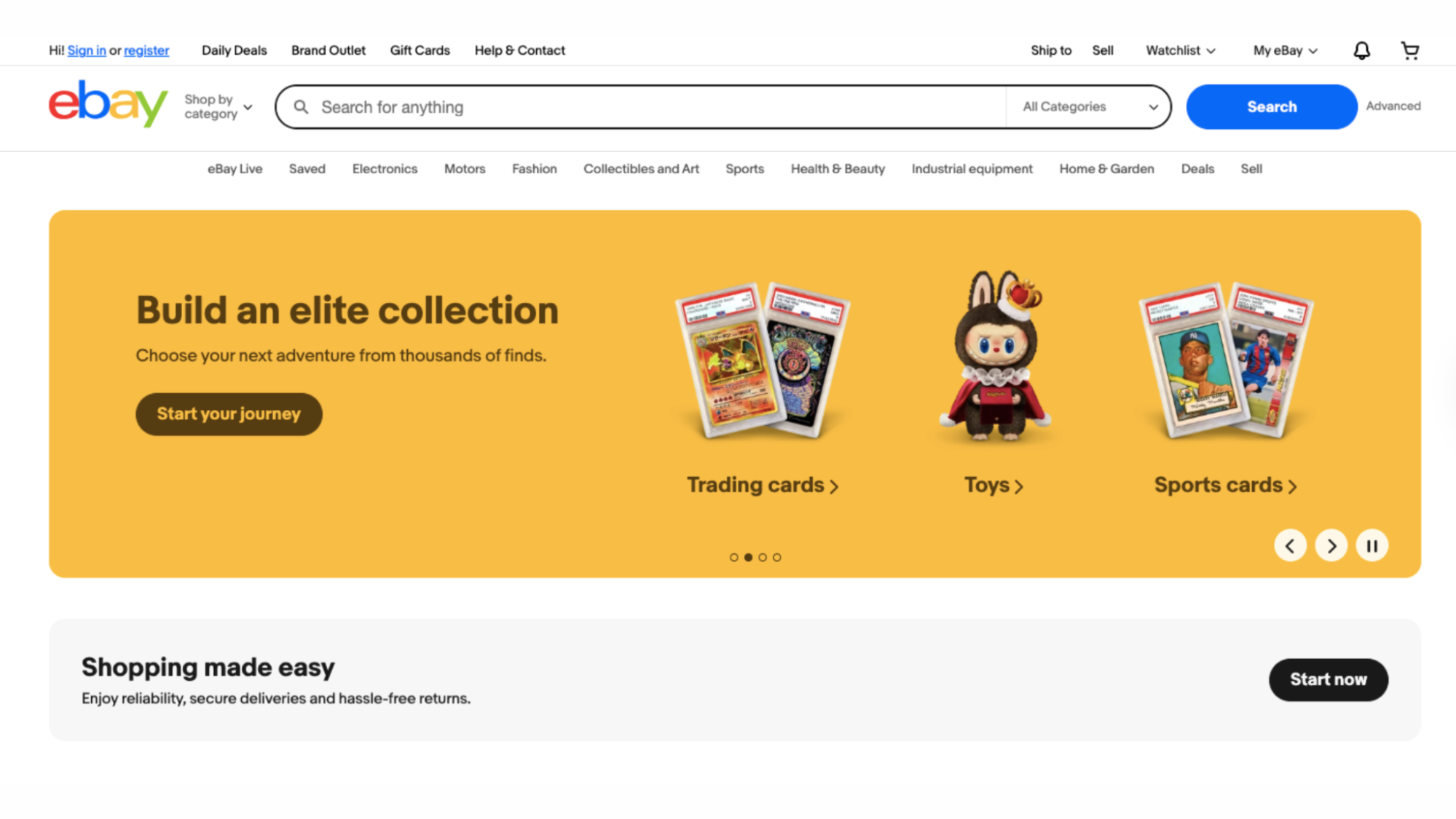
Poshmark: The Social Fashion Marketplace
Unlike selling clothes on eBay, Poshmark isn’t really a marketplace, it’s a fashion-based social network that happens to have a checkout button. If you ever wondered why selling on Poshmark vs eBay feels so different, it’s because Poshmark relies heavily on engagement over search optimization.
With 80+ million users of which most are women, in the US and Canada. It’s widely effective for selling clothing, shoes, bags, and accessories, but only if you play the Poshmark game correctly.
The things that make selling clothes on Poshmark unique:
- The more your products get shared, the more they are viewed. These listings move based on activity, not SEO.
- Shipping is simple. Every sale comes with a prepaid $6-$9 USPS label, thanks to the Poshmark shipping label workflow.
- There is a strong community culture. Buyers on this platform love personal notes and closet curations.
However:
- Poshmark charges a flat 20% fee on sales over $15 (which is the highest of all platforms).
- No real automation or bulk tools, creating listings at scale is tedious work.
- Not dropshipping friendly. Buyers expect handmade boutique-looking packaging from you, and not elsewhere.
If you’re savvy about building a following and are willing to be active by sharing, following, and sending offers, Poshmark rewards those who hustle. If you prefer automation over social engagement, it can get frustrating, fast.
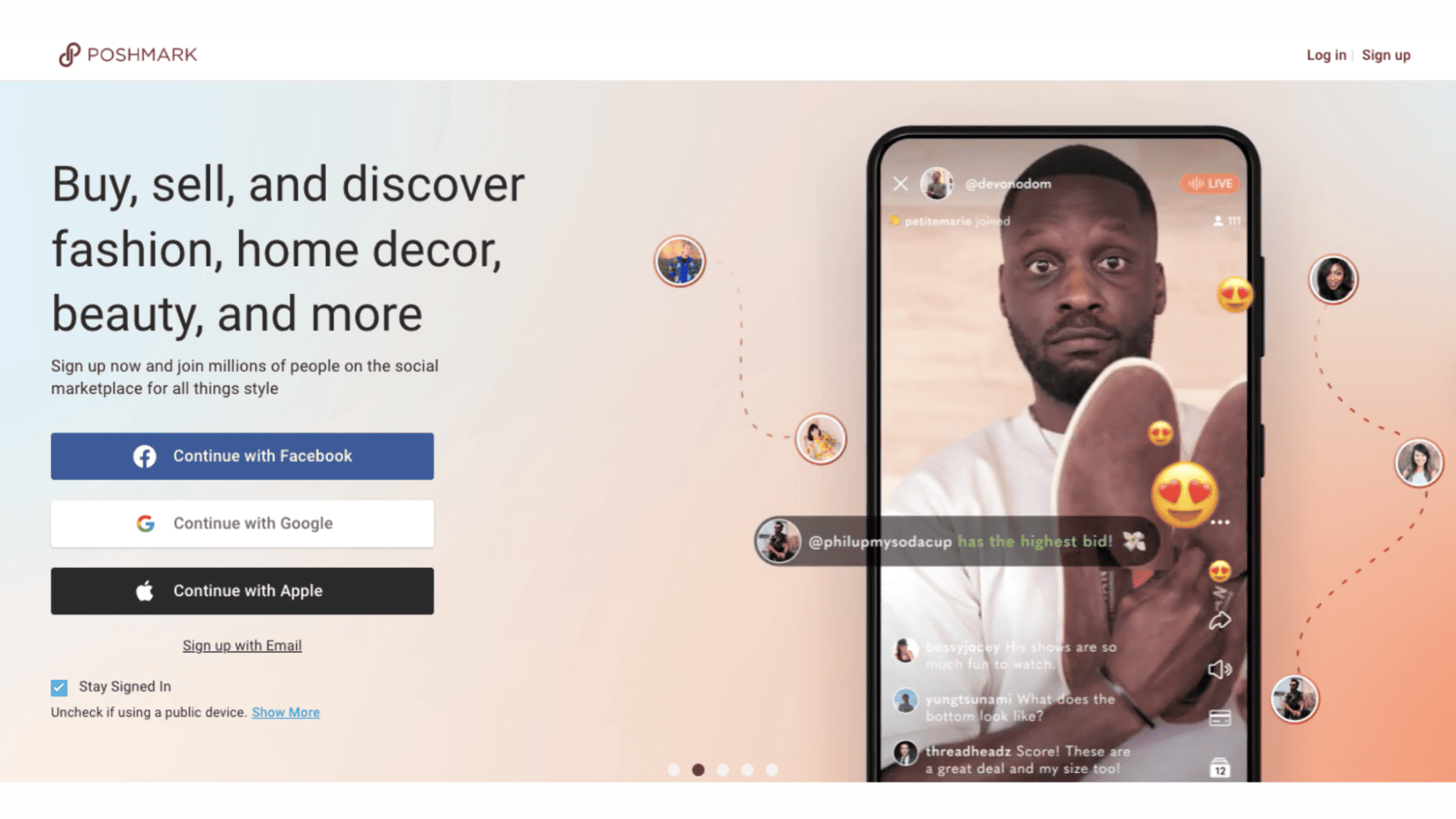
Vinted: The Zero-Fee European Favorite
Vinted is like Poshmark’s mellow European cousin, except it has one huge advantage. There are zero seller fees.
Vinted is one of the only secondhand fashion platforms with over 100 million users, most of whom are based in Europe, with a growing adoption in the US. This platform is ideal for casual clothing resellers who don’t want complex settings or high deductions.
Selling clothes on Vinted is straightforward because:
- You keep 100% of the sale price (buyers pay fees).
- Instant prepaid labels and requests handled in-app.
- Vinted is low drama, it’s less of a haggle compared to Poshmark.
But here’s the catch in the Vinted vs eBay comparison:
- Vinted discourages commercial selling and dropshipping.
- No promoted listings or advanced analytics.
- There is a limited global reach outside of Europe. Growth is happening slowly.
Vinted is perfect if you’re selling clothes from your closet or low-volume thrifting. Growth is limited on Vinted.

Vinted vs Poshmark vs eBay fees: (2025 Seller Profit Breakdown)
Making it this far means you’re more interested than just reading vague statements like “Poshmark fees are higher” or “Vinted is cheaper,” and you want numbers on the table.
That’s exactly what you are going to get.
Below is a straight comparison of Poshmark vs eBay vs Vinted fees based on real-world selling scenarios, so you can finally answer the question. “Where do I actually make the most profit selling clothes?”
Fee Structure Overview (2025 Updated)
| Platform | Listing Fee | Selling/Final Value Fee | Payment Fee | Shipping Cost to Buyer | Seller Net Profit Control |
| eBay | Free (up to 250/mo) | 13.25% plus an additional $0.30 | Included | The seller decides on prices | High |
| Poshmark | Free | 20% for items over $15.00, or you have to pay a flat $2.95 for items under $15.00 | Included | Buyer pays a flat rate of $8.49 | Medium |
| Vinted | Free | 0% for all sellers at any price | Included | Buyer pays the shipping fee | Very High |
Real Profit Examples on a $10,$20,$50,$100 Clothing Sale
| Sale Price | eBay Profit | Poshmark Profit | Vinted Profit |
| $10 per item | $8.20 | $7.05 (only pay the flat $2.95 fee) | $10.00 (0% fee) |
| $20 per item | $16.75 | $16.00 (20% of $20 = $4) | $20.00 |
| $50 per item | $42.90 | $40.00 (20% of $50 = $10) | $50.00 |
| $100 per item | $87.45 | $80.00 (20% of $100) | $100.00 |
One clear takeaway is that Vinted wins every bracket by pure profit margin.
Reality check: profit margin is useless if you don’t get consistent sales volume. Making $10 profit once on Vinted is cute; making $8 ten times per day is business. The Platform with more eyeballs often beats the one with better math.
That’s where market demographics and buyer behaviour completely change the outcome. And this brings us to…

Audience & Buyer Behaviour: Who Shops Where (and Why it Matters)
You can have the right product, right price, and flawless photos, but if you’re selling it on the wrong platform, it might as well be sitting in a cardboard box in your garage.
Every marketplace has its own buyer personality:
- Some platforms attract deal hunters who obsess over pricing history.
- Some attract fashion collectors who make decisions on vibe, not logic.
- Some platforms attract fast-moving thrifters who don’t even want to chat, they just want to hit Buy Now and go.
If you understand who’s actually browsing these platforms, you’ll know whether your listings will fly off the shelf or sit there collecting digital dust.
Here’s how the buyer demographics shake out:
| Platform | Primary Buyer Type | Shopping Style | Average Buyer Expectation | Global Reach | Monthly Active Users |
| eBay | General shoppers, collectors, and deal hunters | Search-based | “Is this the best value or a rare find?” | 180+ countries | 130+ million |
| Poshmark | Fashion-forward US women (18-45) | Browsing and impulse | “I want cute stuff, fast, with vibes.” | US, Canada | 80+ million |
| Vinted | European budget-conscious thrifters | Filter search and quick buy | “I want it cheap, clean, and no drama.” | Europe, North America | 100+ million |
Dropshipping & Arbitrage Opportunities (Who Lets You Scale?)

There’s a massive difference between selling a few items manually and running a real operation. That’s where things get tricky, because while all three marketplaces let you sell, not all of them are okay with you reselling.
Some platforms openly support automation, bulk selling, and retail arbitrage. Others pretend to, until you start moving volume and suddenly git hit with a policy violation email.
So instead of guessing (or getting banned), here’s the truth about where you can automate, arbitrage, and actually build a system instead of a side hustle.
Here’s the unfiltered breakdown on resale vs retail arbitrage:
| Platform | Dropshipping Allowed? | Arbitrage Friendly? | Automation Tools Compatible |
| eBay | Yes, with “seller of record” requirements | Strong for Amazon/Walmart or Alibaba flips | Fully compatible with automation tools like Easyinc.io |
| Poshmark | Unofficially tolerated in small quantities, high risk at scale | Not friendly for retail dropshippers | No automation support |
| Vinted | No, commercial sellers are discouraged | Only in discreet manual handling | No automation allowed |
Ebay Dropshipping Rules (How Sellers Stay Compliant)
eBay officially allows dropshipping as long as you follow the eBay dropshipping policy seller of record rules. This means
- You must handle customer service and returns
- Your name must appear on the packing slip/invoice
- No direct Amazon-to-eBay shipments with Amazon branding visible
This is exactly why sellers use Easync.io. To auto-order from suppliers, add custom packing notes, and sync inventory before you oversell.
eBay and Easync work so well because:
- Auto-ordering from Amazon, Walmart, Aliexpress, etc.
- Auto-cancels out-of-stock items
- Price monitoring and automated repricing
- Full order tracking sync to eBay
Poshmark and Vinted simply don’t offer this level of automation.

Poshmark Limitations With Dopshipping
Some sellers secretly buy from Amazon and ship to Poshmark buyers, but that’s not officially allowed, and plenty get flagged for “unauthorized packaging.”
Poshmark buyers expect personal shipping. If that brown Amazon box arrives with a Walmart receipt inside? Expect a 1-star review and to get banned.
The final verdict on dropshipping with Poshmark is to just not do it. Poshmark is for hands-on sellers, not automation-driven businesses. Don’t get caught up and banned; it’s not worth your time.
Vinted: The Anti-Dropshipping Zone
Vinted is strictly anti-commercial selling unless you apply for a business account (available only in select EU countries).
They track:
- Multiple identical listings
- Repeat branded packaging
- Supplier-style inventory
Their platform is built for used clothing marketplaces, not high-volume sellers. If detected, listings get shadow-banned. Vinted is great for part-time thrifting and useless for scaled arbitrage.
Ease of Use & Seller Tools
Listing one item is easy. Listing one hundred items is where most people quit. Some platforms are built for quick, casual selling, while others are designed for scaling without losing your sanity.
The difference comes down to a few factors:
| Platform | Listing Speed | Bulk Listing Support | Mobile App Efficiency | Best For |
| eBay | moderate | Yes (easync) | Full control | High-volume resellers |
| Poshmark | Fast | No bulk listing | Smooth but manual | Casual clothing flippers |
| Vinted | Very fast | No bulk tools | Quick but basic | Closet cleanouts or simple resellers. |
Selling five items a week means that Poshmark or Vinted will be fine. But if you’re selling 50-500 items a month, eBay and Easync are a combination that won’t burn you out.
Shipping and Logistics
Now, to take it a step further, you can have the perfect listing on the perfect platform, selling to the perfect audience, and still lose money or your time if the shipping setup is inefficient.
Some platforms hold your hand and give you a prepaid label. Others hand you the wheel and say, “Good luck, don’t crash.”
Here’s how the shipping workflow happens, a comparison between Vinted vs eBay vs Poshmark shipping:
| Platform | Shipping Method | Who Pays? | International Shipping | Tracking Included? |
| eBay | Seller chooses carriers or eBay International Standard | Either (configurable) | Available worldwide | yes |
| Poshmark | Flat rate $8.49 USPS label auto-issued on sale | Buyer | US and Canada only | yes |
| Vinted | Prepaid labels via the buyer’s carrier selection | Buyer | Limited to EU & selected regions | yes |
So who wins on the shipping front?
- Poshmark wins for convenience, but loses hard on shipping flexibility.
- Vinted is the easiest for casual sellers, but it has no business scaling features.
- eBay gives full control, which can be empowering or overwhelming, depending on your business style.

Return Policies & Seller Protection: Which Platform Has Your Back
Believe it or not, you can have the perfect listing, on the perfect platform, selling to the perfect audience, have a good shipping structure, and still… not make any profit.
Returns are a part of selling online, but how painful they are depends entirely on where you sell. There are three main reasons why items can get returned.
- A buyer claims “item not as described.”
- A package gets lost.
- Someone files a return 30 days after wearing it out.
It’s in these very moments that you don’t need features; you need backup, and here’s how each platform handles this tricky part of business.
eBay: Flexible but Buyer-Leaning
- Sellers can choose their own return window. Anywhere between 0 and 3 days, most choose 30 days.
- Return shipping is configurable, you can decide whether you or the buyer pays.
- Disputes go through the Resolution Center, and escalation is possible if things get messy.
- Seller protection is moderate, eBay slightly favours buyers, but tracking and documentation usually wins cases.
Poshmark: Strict but Seller Friendly
- Returns are only allowed within 3 days, and only if the buyer claims the item is not as described.
- Poshmark provides the return label, so it won’t cost you anything.
- They review the case and make the final decision internally, no fighting back and forth with the buyer.
- Strong protection. The buyers cannot return an item just because they changed their mind.
Vinted: Fast Flips, Slow Support
- Buyers get 2 days after delivery to report an issue, according to the Vinted Refund Policy.
- In most regions, the buyer pays return shipping.
- Disputes are handled via in-app messaging, then mediated by Vinted support.
- Protection is moderate, but support response time can be frustrating.
Success Strategies: How to Win on Each Platform
Each marketplace rewards a different selling style, which means copy-pasting the same approach everywhere is a guaranteed way to fail. Winning on each one is possible if you follow this advice.
How to Succeed on eBay
eBay rewards optimization and consistency. If you want to rank high and sell fast, you need to:
- Write SEO-driven titles that match what buyers search.
- Offer competitive shipping. Free, if possible, or at least fast.
- Use automation tools like Easync to stay ahead of price wars and stick changes.
If you treat eBay like a search engine, it will reward you with steady sales and global reach.
How to Succeed on Poshmark
Selling clothes on Poshmark is less about algorithms and more about personality and interaction. To get consistent sales, you must:
- Share your listings daily, multiple times if possible.
- Send offers, bundle discounts, and engage with “likers.”
- Curate your closet visually, think aesthetic boutique, not garage sale on wifi.
On Poshark, visibility comes from activity, not automation. Suppose you’re an influencer at heart. You win.
How to Succeed on Vinted
Vinted is all about speed and simplicity. Buyers scroll fast and buy faster, but only if your listings are:
- Shot in bright, natural lighting, with no dark bedroom carpet photos.
- Priced aggressively, cinted buyers expect a deal.
- Responded quickly. If you hesitate, you lose a sale.
Treat Vinted like a fast-moving Flea Market with quick flips and minimal drama. Stick to the Vinted commercial selling rules, and you will be golden.
Easync integration: The deciding Factor for Scalable Sellers
Are you ambitious and want to sell more than 50+ items per month? You need to consider what that would be like to manually edit prices, track stock, and fulfill orders. It can become a handful. That’s where Easync turns eBay from high-maintenance to hands-off.
What Easync Automates on eBay:
- Auto-imports trending products
- Auto-orders from Amazon, Walmart, Aliexpress, etc.
- Inserts your name as the seller of record
- Auto-updates tracking
- Auto-reprices based on competitors
Easync has a 7-day free trial, so you can test it out yourself before spending your hard-earned eBay profits.
Final Verdict: Which Platform Should You Choose?
The truth is that there isn’t a single winner, only the platform that suits your selling style.
If you’re simply clearing out your wardrobe and want quick, no-fuss sales, Vinted makes the most sense thanks to its zero-fee model and low-effort workflow.
The social side of selling is a strong point for some. Poshmark is your go-to if you enjoy sending offers, styling listings, and chatting with buyers.
But, if your goal is to build a genuine reselling or dropshipping operation, eBay stands alone as the only marketplace that offers global reach, full SEO control, and compatibility with automation tools like Easync.
While there is no one-size-fits-all solution, there is a clear answer for each type of seller.
FAQ: Poshmark vs eBay vs Vinted
Is it better to sell on eBay or Poshmark?
It depends entirely on how you prefer to sell. If you want automation, the ability to scale, and access to buyers outside your country, eBay is the obvious winner. If you prefer a more social fashion-focused environment where personality and engagement drive sales, Poshmark will be a more natural fit.
Is Vinted better than eBay for selling clothes?
Vinted is better if you’re casually selling from your own closet and want to keep the full sale price without fees. However, if your goal is to consistently sell at volume or build a real reselling business, eBay’s visibility and tools make it far more effective long-term.
Can you dropship on Poshmark or Vinted?
Neither Poshmark nor Vinted officially allows for dropshipping. Some sellers try to manually forward products from other retailers, but it’s risky business. eBay is the only place where dropshipping is formally permitted, as long as you act as the seller of record, and tools like Easync make it manageable.
Do buyers prefer auctions or fixed listings on eBay?
Fixed-price “Buy it Now” listings dominate modern eBay because buyers prefer instant purchasing over waiting. Auctions still work well for collectables, rare items, or hype products, but most clothing in general inventory performs better with set pricing.
Can I sell on all three platforms at the same time?
You can, and many sellers do, but it only works if you stay organized. If you’re selling casual one-offs, listing everywhere is fine. If you’re running a growing platform, it’s advisable to pick one platform (eBay) and cross-listing high-value or slow-moving pieces to Poshmark or Vinted as backups.
Is Poshmark better than eBay?
Poshmark is better for social, hands-on selling. eBay is better for scaling and automation. It simply depends on how you like to sell.
Kaylin Bailey is an experienced e-commerce strategist and content writer specializing in dropshipping, automation, and online retail growth. At Easync, she focuses on helping entrepreneurs streamline their stores with data-driven insights, practical guides, and software solutions that optimize product sourcing, pricing, and order fulfillment. With years of hands-on experience in digital commerce and platform integrations, Kaylin’s articles offer actionable advice grounded in real-world testing, helping sellers stay competitive in a rapidly evolving marketplace.
